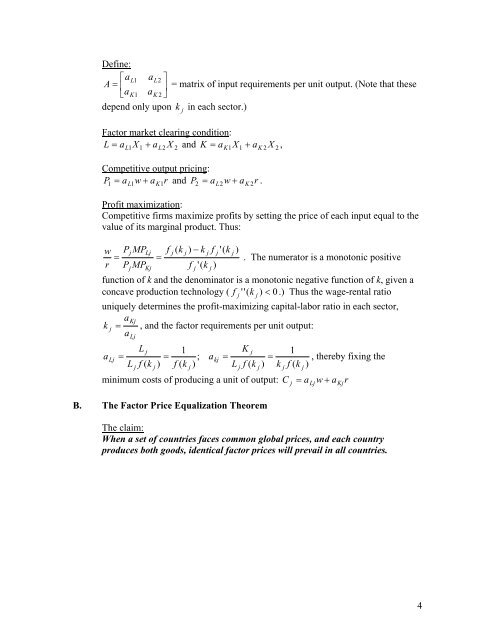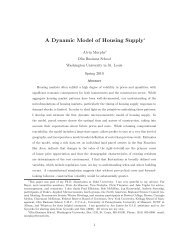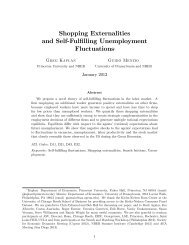1 J. Tybout Economics 507a: International Trade Lecture 1 I ...
1 J. Tybout Economics 507a: International Trade Lecture 1 I ...
1 J. Tybout Economics 507a: International Trade Lecture 1 I ...
- No tags were found...
Create successful ePaper yourself
Turn your PDF publications into a flip-book with our unique Google optimized e-Paper software.
Define:⎡aL1aL2⎤A = ⎢ ⎥ = matrix of input requirements per unit output. (Note that these⎣aK1aK2 ⎦depend only upon k j in each sector.)Factor market clearing condition:L = aL 1X1+ aL2X 2 and K = aK 1X1+ aK2 X 2 ,Competitive output pricing:P = a w a r and P = a w a r .1 L1+ K12 L2+ K 2Profit maximization:Competitive firms maximize profits by setting the price of each input equal to thevalue of its marginal product. Thus:w PjMPLjf j ( k j ) − k j f j '(k j )= =. The numerator is a monotonic positiver PjMPKjf j '(k j )function of k and the denominator is a monotonic negative function of k, given aconcave production technology ( f j ''(k j ) < 0.) Thus the wage-rental ratiouniquely determines the profit-maximizing capital-labor ratio in each sector,aKjk j = , and the factor requirements per unit output:aLjL j 1K j 1a Lj = = ; akj= = , thereby fixing theL j f ( k j ) f ( k j ) L j f ( k j ) k j f ( k j )minimum costs of producing a unit of output: C = a w a rB. The Factor Price Equalization Theoremj Lj +The claim:When a set of countries faces common global prices, and each countryproduces both goods, identical factor prices will prevail in all countries.Kj4
















